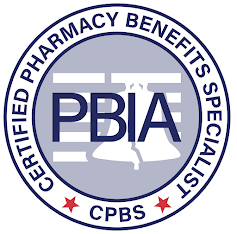Major Trends in the 2023 Specialty Therapy Pipeline and other notes from around the interweb:
- Major Trends in the 2023 Specialty Therapy Pipeline. Specialty pharmacies grew by 315% between 2015 and 2021, with hospital or health system-owned specialty pharmacies accounting for about a third of this total growth—and that the specialty drug pipeline is projected to grow by another 8% each year through 2025. Specialty pharmacy continues to carry the FDA pipeline year over year with 39 more drugs that could potentially be approved by the end of 2023, and of those 39, 28 of them could be considered specialty. Listed first are 8 major recent specialty drug approvals that have the potential to change the standard of care in a given disease and/or have a large economic impact to the payer. Looking to the rest of 2023, there are several more specialty drugs anticipated to receive FDA approval. Here is a wrapped-up version of these anticipated approvals.
- Self-Funded Health Plans: Breaking the Myths to Find Cost Savings. Employees generally know healthcare is expensive, but they often don’t know just how expensive it is until they’re on COBRA and are shocked at the cost. Companies pay around $23,000 per year for family and $8,000 per year for single coverage medical insurance. For even a small, 100-person company, that’s a $1.6 million budget. While 3–5% savings doesn’t sound like much, it is a lot when you consider the high starting costs. But how do you achieve cost-savings on an employee benefit plan? Self-funding may be the answer, providing average savings of up to 10% per year. Misconceptions about self-funded health plans are a big inhibitor to adoption. We’ll tell you right now—the idea that companies must take on more risk isn’t true. Read on for more myths about self-insurance and what the real story is behind this cost-saving approach.
- Pharma-PBM Battle Escalates on Capitol Hill. As the legislators have advanced reforms related to PBMs and other drug pricing issues, manufacturers, insurers, and PBMs have escalated their attacks on each other. The Pharmaceutical Research and Manufacturers of America (PhRMA) recently launched a wave of anti-PBM TV ads highlighting how the middlemen limit patient access to needed medicines and fail to pass on discounts to consumers. Conversely, America’s Health Insurance Plans (AHIP) has financed a million-dollar campaign blaming pharma companies for high drug costs. And the PBMs’ Pharmaceutical Care Management Association (PCMA) is airing ads to highlight the benefits of their operations and the need for drug patent reform.
- The Price of the PBM. One crucial element of the US drug supply chain is the wholesaler, who purchases drugs from manufacturers using purchasing power to gain discounts that average around 16 percent, according to IQVIA data. About 92 percent of prescription drugs are distributed through the three largest pharmaceutical wholesalers, McKesson, AmerisourceBergen, and Cardinal. Wholesalers earn revenue through “forward-buying,” purchasing extra inventory at current prices to sell them in future at a revised higher price.

